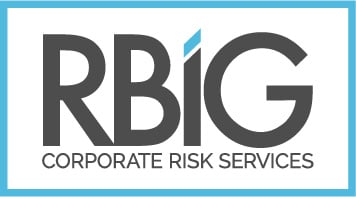Supply chain disruptions, fast rising construction costs and ever-growing energy bills are just some of the issues which could lead businesses to find themselves underinsured. Should they need claim, that could prove very costly.

Business underinsurance is a perennial concern and one which we as diligent commercial insurance brokers constantly guard against on behalf of our clients.
With what might be considered a perfect storm hitting the economic mainland, now, more than ever, businesses need be alert to what can be a very costly exposure, writes Stephen Hodgson.
A month into 2023 and it's already clear that UK plc is facing a turbulent year.
The International Monetary Fund (IMF) has just released a particular pessimistic forecast, predicting contraction of the UK economy.
This prediction is informed by factors such as spiralling energy costs, increasing interest rates - with another Bank of England rise announced last Thursday - and higher tax burdens.
It's clear too that Brexit uncertainties - notably supply chain and recruitment issues - together with the war in Ukraine, remain a concern to business owners juggling their bottom lines.
Cost pressures
Given the severity of cost pressures, financial directors are no doubt keenly looking at how they can shave expenditure.
One temptation may be to resist increasing commercial insurance cover to account for inflation, in particular, of rebuilding, reinstatement and equipment costs.
In it's newly published Risk Insights Report 2023, Aviva notes a disconnect between those businesses who felt they have the right level of cover and it's own estimates.
Having polled 1,200 business leaders and senior decision makers, the insurer found that two-thirds of businesses are confident they have appropriate levels of commercial insurance cover.
In contrast, Aviva estimates around 50% of UK business are underinsured, with 40% of policies with buildings insurance suspected of underinsuring at least one property.
Its survey of business leaders also found some 13% of respondents lacking confidence that they were fully insured, with 21% unsure.
That's concerning but, looking ahead, perhaps more worrying was the finding that over a fifth of those polled said they have reduced, or considered reducing, their business insurance cover in the past year.
This suggests that more businesses could be facing a very real risk of underinsurance. Here's why
Creating the conditions
Some of the economic woes previously outlined are also creating the conditions for an underinsurance crisis.
The construction industry is far from immune to the inflationary pressures being endured elsewhere.
Material costs have risen dramatically and labour shortages are impacting both project timescales and building firms' payrolls.
The Building Cost Information Service (BICS) reports that in 2022 construction materials inflation rose by nearly 20%, citing factors such as supply chain disruptions, the Ukraine war, energy costs and commodity prices.
The good news is that BICS thinks that inflation may have peaked, although it predicts a 2.5% rise in construction costs for 2023 due to increased labour costs.
What these figures illustrate is how, over a relatively short period of time, the gap between how much a property might cost to rebuild or reinstate, and how much it is insured for, could significantly widen.
It's why we are seeing commercial insurers seeking to apply index-linked rises as high as 16% being applied to the sums insured for commercial property insurance. Before you panic, that does not equate to premium rises of up to 16%, but it does indicate just how wide a gap can so quickly emerge between what a business thinks it need be insured for, and the real-world figure.
Underinsurance claims scenario
So, what's the potential impact of underinsurance?
This commercial property insurance claims scenario from Aviva explains it well.
A property owner who rents holiday cottages had the sum insured for those properties based upon a valuation made five years prior.
Following the spread of a fire from a neighbouring property, one cottage was so catastrophically damaged it required demolition and a total rebuild. Based on its previous valuation, there was a huge gap between the sum insured - £400,000 - and the cost of rebuilding.
Material and labour costs had risen so much in the intervening years that the property owner was found to be underinsured by 47%. In cash terms the shortfall was a whopping £350,000.
That gap was too much for the policyholder to bridge, resulting in a cash settlement being agreed and the insured losing that property as a source of income.
This scenario would apply to any underinsured commercial property - an office, warehouse, depot - should the policyholder need claim. The deficit between the sum insured and the actual rebuild or reinstatement cost is directly proportional to the settlement the insurer is obliged to offer.
Stock answers
The same is true for underinsurance of other assets such as equipment and stock. Here, similar factors may apply in relation to calculating an appropriate level of cover.
Supply chain issues are among factors that have impacted vehicle values for example.
Other factors might also be at play too. If your business holds stock, it may that levels are seasonally affected.
Aviva again provides a good example. A garden centre based its cover on its typical stock levels, without taking into account the 40% uplift in goods it held for increased trade at Christmas.
The people who hadn't forgotten were the thieves who targeted the property precisely because of the festive bounty it held.
The garden centre ended up not only nursing a loss, with a 29% shortfall on the claim, but then lacked the funds to restock and recoup those losses during such an important trading period.
How can you prevent underinsurance?
There are a number of steps you can take to prevent your property and other assets being underinsured. Preparation is key.
When it comes to buildings, make sure these are regularly revalued for rebuilding and reinstatement. If you don't already have one, we can help you enlist the services of a chartered surveyor to provide an assessment for your insurer.
We can also advise you on how best to value equipment and stock, taking into account the nature and idiosyncrasies of your business.
As well as helping prevent underinsurance, preparing evidence of asset values will bolster your insurer's confidence in you as a commercial risk. This may help your wider relationship should you hold other commercial insurance.
On a more general note it's important to recognise that underinsurance is an economy so false it could significantly damage your business, possibly fatally. If you can't address the unisured loss, that could be it.
That means being pragmatic about renewal of your commercial insurances, accepting that you are likely to need increase the sums insured.
Incidentally, that's not always the case. The case for regular revaluation of properties is also made by research from Rebuild Costs Assessments which found that last year 13% of commercial and residential buildings were overinsured, typically by a sizeable 132%.
What should you do next?
If you'd like expert advice on assessing the values of your business assets and avoiding the pitfalls of commercial underinsurance, talk to the professionals.
We'll happily provide a no-obligation consultation, without charge, to businesses of all shapes and sizes, whether you're an existing client or new to RBIG.
If you'd like to arrange this simply click here to email me, or here to call.
You may also be interested in:
- Are you ready to renew? This includes details of how to obtain our free guide on how to get best value in a hard market)
- Manufacturers urged to take protection against supply chain disruption. How machinery insurance can protect critical assets.
- Forecast increase in insolvencies could push up risk for Directors & Officers.





